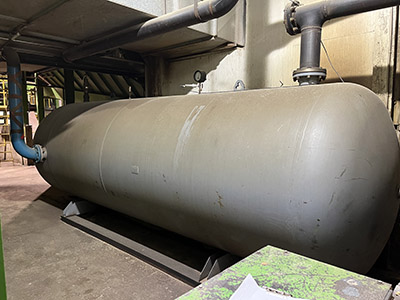
A very important element of any compressed air system is the system storage volume. But how much do you need? Is your storage capacity big enough?
Sufficient system storage is important to the efficiency of a compressed air system because it allows for easier compressor control. Having a large volume connected to your compressors slows down the compressor cycles, reducing the compressor energy consumption.
Significant storage also reduces the pressure fluctuations that happen when the air demand temporarily exceeds the capacity of the running compressors. This limits the pressure decay and stabilizes the pressure and can prevent the start of additional compressors that may start for no reason and jack up your energy bill.
How do you know you have enough storage? Well, an easy way to do it is to find out the cubic feet per minute capacity of your largest compressor and then multiply by 4. The main control storage in any system should be about the product of the calculation, in U.S. gallons of capacity.
For example, if you have a 100-hp compressor with 440 cfm capacity, the multiplication (440 x 4) yields 1,760 gallons — you can round this up to 2,000 gallons for a standard size. The rule of thumb in the industry is to have about 3 to 5 gallons of storage volume times the cfm rating of your largest trim compressor (trim is the one producing part loads).
And be aware, to be of benefit to your system, the storage receiver must be “effective.” If there is a large pressure differential between your air compressor and the storage tank, often caused by air dryers and filters, or the pressure band on the compressors is set too narrow, the positive benefits of having the storage can be greatly reduced. For example, having a 7-psi pressure drop across dryers and filters, and only a 10-psi operating band on the trim compressor will reduce the “effective” size of the storage tank by 70% and make it appear too small to the compressors.
Assess your storage volume today and correct it for a more efficient and stable system!
Filed Under: Components Oil Coolers, Compressed Air Technologies, Pneumatic Tips